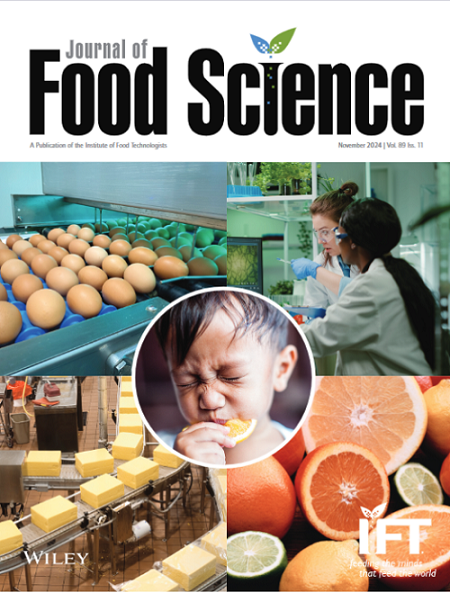Rheological, Baking, and Microstructural Properties of Proso Millet-Hydrocolloid-Based Gluten-Free Bread
Abstract
ABSTRACT
The demand for high-quality gluten-free (GF) baked goods is rising. Meeting these needs has been a technological challenge due to the limited functionality of GF ingredients. To help address these, a study was conducted to investigate how different levels of hydrocolloids, their combination, and starch type impacted rheological, textural, and physical properties of GF dough and breads developed with proso millet. The results indicate that hydrocolloid-formulations increased values of storage (G′) and loss (G″) moduli with lower shift angle (tan δ) values. Also, hydrocolloid formulated GF bread showed reduced specific volume (1.88–2.88 mL/g), compared to wheat bread (3.58 mL/g). Additionally, all hydrocolloid formulations with 50% millet starch reported higher values for crust lightness (72.23–75.86) than wheat flour (43.86), with their respective formulations showing a negative shift to redness at both 2% and 3% gum levels. Storage studies showed significant reductions in bread firmness, although this observation was not influenced by hydrocolloid type and formulation level, but vice versa with respect to starch type, where corn/potato and millet starches produced the highest and lowest firmness, respectively. Overall, our results demonstrated that the comparative combination of hydrocolloids and starch with proso millet flour can help develop high-quality GF bread.
Practical Applications
The knowledge of how millet flour, a type of gluten-free ingredient, interacts with hydrocolloids and different types of starch is critical to improving the quality attributes of GF bread. This study provides insight into how various GF ingredients modulate the quality attributes of GF bread. The practicality of this is for the GF food industry, which is looking for new ingredients, and the consumer base that is seeking unique and varied GF products.




 求助内容:
求助内容: 应助结果提醒方式:
应助结果提醒方式:


